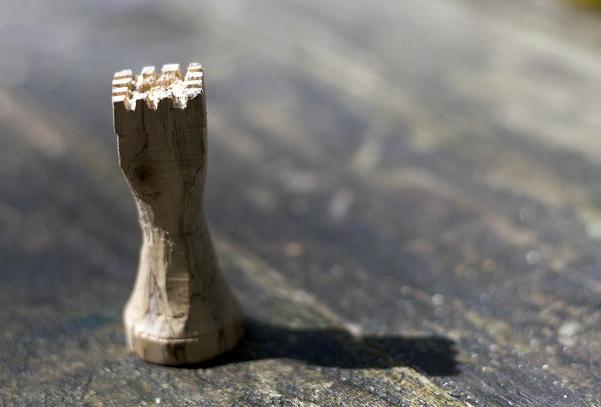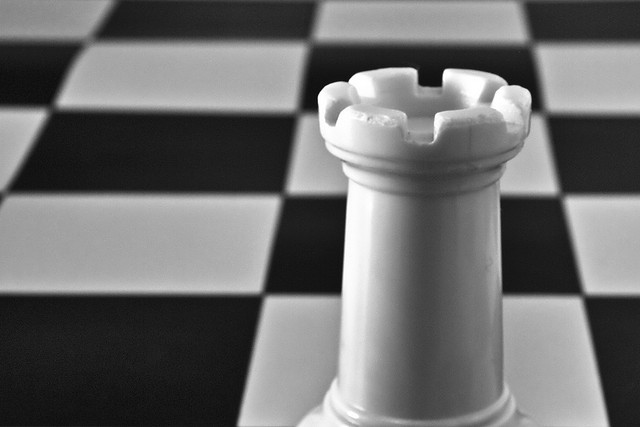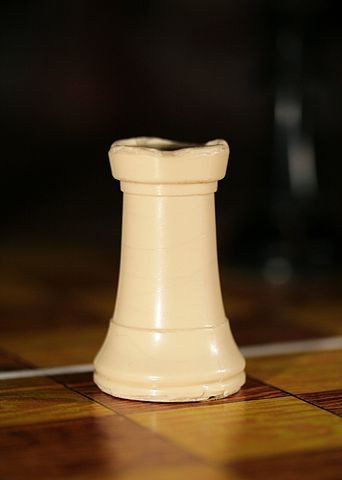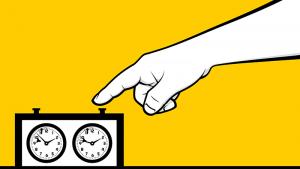
The Positional Rook Lift
Last week, we examined the rook lift as an attacking tool. Of course, a rook is not only an attacking piece -- it can be mobilized for positional reasons as well.
In this article, we will analyze several instances in which the rook lift serves a strategic purpose.
Rook lifts are remarkably self-explanatory. Some ideas cannot be truly comprehended without a thorough analysis or explanation, but rook lifts are usually both straightforward and tremendously difficult to neutralize.
From a positional standpoint, rook lifts normally serve one of three purposes:
1. Increase pressure on a weak pawn or square.
2. Facilitate an important piece trade.
3. Prepare a breakthrough.
This is not an all-encompassing list by any means, but I have never seen a positional rook lift that does not have at least one of these three ideas as its main purpose.

White Rook _1311651 by Christopher Irwin
As usual, we will deal with each point separately.
1. Increase pressure on a weak pawn or square.
Because of a rook's lateral mobility, it often does not take long to maneuver it from one side of the board to the other. In the following masterpiece (against Karpov, mind you), GM Valery Salov proves that a positional rook lift is usually worth a lot more than two or three tempi!
Notice how the rook lift completely altered the course of the game, allowing White to viciously target an ostensibly unimportant weakness.
2. Facilitate an important piece trade.
Trading a piece is usually an intermediate step in a plan, but it can very well be your end goal. I first saw the next brilliant positional victory -- one of Bobby Fischer's finest games, if you ask me -- in Mikhail Shereshevsky's famous work Endgame Strategy. I analyzed it in my own book, Mastering Complex Endgames, but it deserves another revival.
As you can see, the queen trade drastically altered not only the objective evaluation of the position, but also the course of the game. Reshevsky found himself with terribly passive pieces and no counterplay, and Bobby smoothly ran him off the board, almost as if Reshevsky were a class-D player at the local chess club!
3. Prepare a breakthrough.
At times -- especially when your opponent is hanging on the precipice -- the result of the game hinges on your ability to crash through his or her defensive bastion with a pawn break. If you find yourself unable to make a tempting breakthrough work, a rook lift that tightens the screws and increases the tension even further might just be the solution.
With this, unfortunately, our study of rook lifts comes to an end. Whether you are engaged in a mind-bending tactical skirmish or a maneuvering slugfest, do not forget that rooks are meant to be "lifted" and mobilized.
As usual, please feel free to post examples of rook lifts from your own games. Sayonara!
RELATED STUDY MATERIAL
- Check out GM Daniel Naroditsky's previous article: The Tactical Rook Lift.
- Learn how not to use the wrong rook in GM Roman Dzindzichashvili's video lesson.
- Try an intermediate lesson on rook tactics in the Chess Mentor.
- Use your rooks like weapons in the Tactics Trainer.
- Looking for articles with deeper analysis? Try our magazine: The Master's Bulletin.








